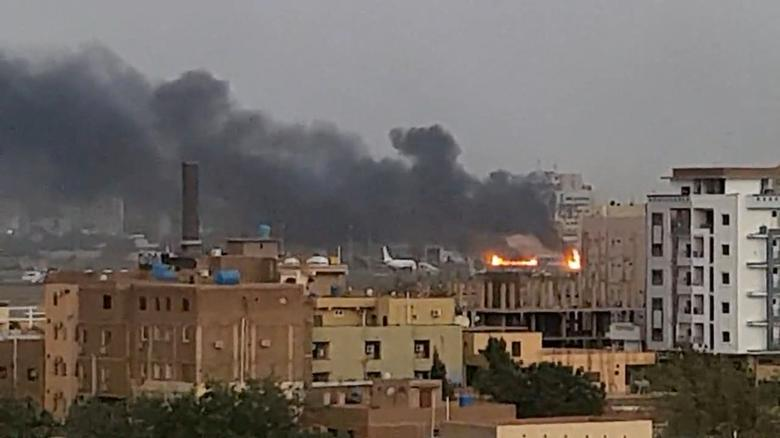Despite Ceasefire Talks, The Sudan Conflict Escalates
Smoke rises from a bombed building in Khartoum, Sudan. Photo: Abdullah Abdel Moneim/REUTERS.
Sudan is in the throes of conflict and violence as the Sudanese military and a paramilitary group, Rapid Support Forces (RSF), fight for power over military and governing power. Fighting broke out at the beginning of April and has continued across Sudan. Abdel Fattah al-Burhan, Sudan’s military leader, and Mohamed Hamdan Dagalo, RSF Commander, have been in a clash for power, putting the hopes of appointing a civilian ruled government into question.
459 people have been killed and more than 4,000 injured in the violence so far. An RSF spokesman stated, “Our forces have remained strictly committed to the humanitarian truce that we agreed upon since midnight, and it is not true that we targeted any aircraft in the sky of Wadi Seyidna in Omdurman,” referring to a Turkish evacuation plane that the Turkish Defense Ministry claimed was shot by the RSF forces.
Civilians in Khartoum are unable to leave their homes as fighting rages on, and report running low on food, water, and medicine. Foreign diplomats began evacuating as the embassies in response to the increase in fighting. Hospitals in Khartoum are reporting a lack of resources to treat patients. Despite the numerous ceasefires announced by both the RSF and the Sudanese military in order to let civilians escape, they have not been upheld.
Al-Burhan and Dagalo, once allied to overthrow Sudan’s former president in 2019, began a power struggle over charge of military operations, as Sudan establishes their new government. In 2021, al-Burhan and Dagalo were instrumental in the success of the military coup, and worked together to build the transitional government. Problems arose, when al-Burhan wanted to integrate the RSF into the Sudanese military, launching a dispute over Dagalo’s subordination to al-Burhan.
Civilians flee on a bus out of Khartoum to Aswan, Egypt. Photo: El-Tayeb Siddig/REUTERS
Dr. Nima Saeed Abid of the World Health Organization in Sudan indicated concern over the central public health laboratory in Khartoum being seized by “one of the fighting parties”. Abid stated, “That is extremely, extremely dangerous because we have polio isolates in the lab. We have measles isolates in the lab. We have cholerae isolates in the lab.” The seizing of the laboratory is only one example of the threats posed by the fighting for civilians. The threat of bombs and artillery strikes loom over the civilians of Khartoum.
The U.S. and U.K. began diplomatic efforts to engage the two military forces into talks of standing down. The discussion of a 72-hour ceasefire to let citizens flee Khartoum is said to be in effect as of April 28th, but there appears to be no end of the fighting in sight, as the two military forces only increase their clashes. Currently, it is estimated that the Sudanese military has enlisted 210,000 soldiers, and the RSF has roughly 70,000, although the RSF are better trained and equipped. As the two sides continue to fight, the Sudanese citizens continue to live in peril.


